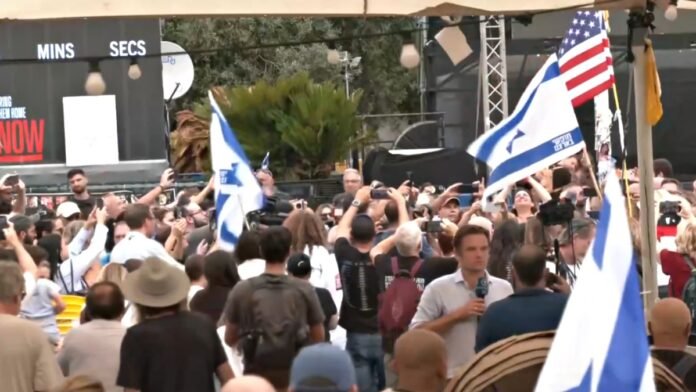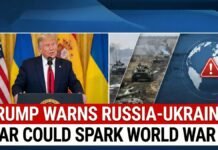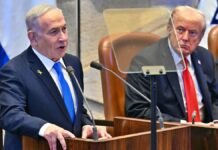
Key Points
- Israel and Hamas confirm historic ceasefire agreement in October 2025 after prolonged negotiations
- First phase of President Donald Trump’s comprehensive Middle East peace plan now in effect
- Gaza war has claimed over 67,000 lives since conflict escalation began
- Long-awaited hostage release deal included as crucial component of ceasefire terms
- Agreement represents major diplomatic breakthrough reshaping regional Middle East dynamics
- Ceasefire marks potential end to one of the deadliest conflicts in recent Israeli-Palestinian history
- Implementation details and timeline for subsequent phases yet to be fully disclosed
- International community welcomes historic agreement as step toward lasting regional stability
Tekaviv: In a momentous diplomatic breakthrough, Israel and Hamas have officially confirmed their acceptance of a comprehensive ceasefire and hostage exchange agreement on October 9, 2025, marking a potential end to the devastating Gaza conflict that has claimed over 67,000 lives. The accord represents the first phase of an ambitious peace framework championed by President Donald Trump, whose administration has positioned Middle East peace as a cornerstone foreign policy priority since his return to office in January 2025.
The announcement comes after months of intensive negotiations mediated by the United States, Qatar, and Egypt, with President Trump personally engaging regional leaders to secure commitments from both sides. This agreement stands as one of the most significant diplomatic achievements in the Israeli-Palestinian conflict in recent decades.
Devastating Human Cost of the Conflict
The Gaza war, which escalated dramatically in recent years, has extracted an unprecedented humanitarian toll. With over 67,000 confirmed deaths, the conflict represents one of the deadliest chapters in the Israeli-Palestinian struggle. The casualty figures include combatants and civilians from both sides, with Gaza’s densely populated areas bearing the brunt of destruction.
Beyond fatalities, the conflict has displaced hundreds of thousands of Palestinians, destroyed critical infrastructure including hospitals, schools, and residential neighborhoods, and created a humanitarian crisis affecting over two million people in Gaza. The international community has repeatedly called for immediate cessation of hostilities and humanitarian corridors to deliver essential aid to affected populations.
Israel has maintained its military operations were necessary responses to security threats, while Hamas and Palestinian authorities have condemned what they characterize as disproportionate military action against civilian populations.
Trump Administration’s Peace Framework
President Donald Trump’s involvement in Middle East peace negotiations marks his renewed focus on the region following his January 2025 inauguration. Building on diplomatic relationships established during his first term (2017-2021), Trump leveraged connections with Gulf states, Israel, and regional powers to create momentum for negotiations.
The ceasefire agreement constitutes the initial phase of what the Trump administration describes as a multi-stage comprehensive peace plan. While complete details remain undisclosed, sources familiar with the negotiations indicate the framework includes:
Phase One: Immediate ceasefire implementation, hostage and prisoner exchanges, and humanitarian aid access to Gaza
Subsequent Phases: Expected to address long-term governance arrangements for Gaza, reconstruction funding, security guarantees for Israel, and potential pathways toward broader Israeli-Palestinian peace negotiations
The Trump administration has characterized this agreement as fundamentally different from previous failed attempts, emphasizing that all parties have concrete commitments and verification mechanisms to ensure compliance.
Hostage Release Provisions
A critical component driving both parties toward agreement involves the long-awaited resolution of hostage situations. Hamas has held numerous Israeli civilians and soldiers captured during military operations, while Israel detains thousands of Palestinian prisoners in its facilities.
The ceasefire agreement reportedly includes detailed schedules for phased releases:
- Immediate release of humanitarian cases including women, children, elderly, and wounded individuals
- Subsequent exchanges of military personnel and security prisoners
- International Red Cross verification and monitoring of all releases
- Specific timelines linked to ceasefire compliance by both parties
Families of hostages on both sides have expressed cautious optimism, with Israeli hostage families’ organizations welcoming the agreement while emphasizing the need for complete transparency and swift implementation.
Regional and Geopolitical Implications
The ceasefire agreement carries profound implications extending far beyond Gaza and Israel, potentially reshaping Middle East geopolitical alignments:
Iranian Influence: The agreement may reduce Iran’s leverage through its proxy relationships with Hamas and other Palestinian militant groups, potentially weakening Tehran’s regional positioning.
Arab State Relations: Gulf states including Saudi Arabia, the United Arab Emirates, and Egypt have played crucial behind-the-scenes roles, positioning themselves as essential peace brokers and potentially opening pathways for expanded normalization with Israel.
US Regional Strategy: Success in brokering this agreement strengthens American diplomatic influence in the Middle East, potentially facilitating broader strategic objectives including countering Iranian expansion and promoting economic integration.
Palestinian Authority: The agreement’s impact on Palestinian political dynamics remains uncertain, with questions about whether the ceasefire strengthens or undermines the Fatah-led Palestinian Authority’s legitimacy relative to Hamas.
International Response
Global leaders have responded with widespread, though cautiously optimistic, support for the ceasefire announcement:
The United Nations Secretary-General issued a statement welcoming the agreement and pledging international support for reconstruction and humanitarian assistance. European Union officials expressed hope that the ceasefire would hold and called for sustained diplomatic engagement to address root causes of the conflict.
Regional powers including Turkey, Qatar, and Jordan have emphasized the need for rapid implementation and called for immediate international humanitarian intervention to address Gaza’s crisis.
Human rights organizations, while welcoming the end of active hostilities, have called for independent investigations into alleged war crimes and accountability mechanisms for actions during the conflict.
Implementation Challenges Ahead
Despite the historic nature of this agreement, significant challenges remain:
Trust Deficits: Decades of failed peace attempts and broken ceasefires have created deep mistrust between parties, making sustained compliance uncertain.
Internal Political Pressures: Both Israeli and Hamas leadership face domestic constituencies skeptical of peace agreements and opposed to concessions.
Verification Mechanisms: Ensuring both sides adhere to terms requires robust international monitoring, which must be established and funded.
Reconstruction Complexity: Gaza’s massive infrastructure damage requires billions in reconstruction funding, complex coordination, and guarantees against militarization.
Long-term Political Status: While the ceasefire addresses immediate violence, fundamental questions about Palestinian statehood, Gaza’s governance, and final status issues remain unresolved.
The coming days and weeks will prove critical as both parties begin implementing the agreement’s initial phase. International observers emphasize that sustained diplomatic engagement, generous humanitarian assistance, and creative solutions to seemingly intractable political issues will determine whether this ceasefire evolves into lasting peace or becomes another temporary pause in an ongoing conflict.
President Trump has pledged continued personal involvement in the peace process, signaling that the United States will maintain diplomatic pressure on all parties to honor commitments and progress toward subsequent phases of the comprehensive framework.





















































